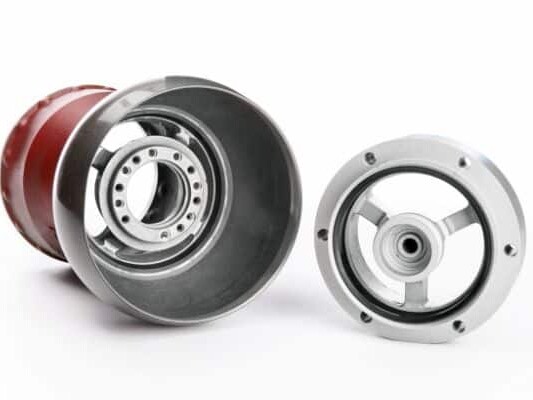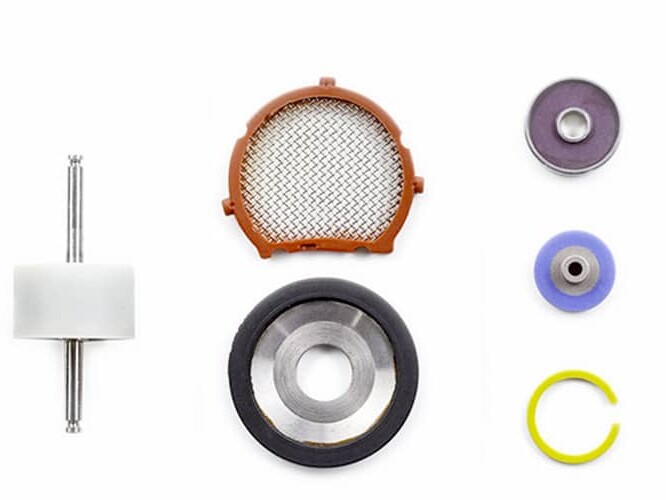What is adhesion-overmolding?
This technology allows the combination of various materials, rigid or flexible, on elastomers in order to produce integral multi-material parts.
As opposed to bonding solutions, overmolding or hot adhesion consists of assembling an elastomer with another material during the vulcanization molding operation (metal, thermoplastic, wood, glass, etc.).
Overmolding can be achieved by compression, transfer or injection processes which add an additional layer of elastomer to an existing part to provide a combination of characteristics that no single material can provide on its own. Overmolded materials can be found in a wide range of applications from medical devices to industrial seals or assembly joints.
Adhesion-overmolding at ITC
As a manufacturing process, overmolding helps provide excellent adhesion between different materials and eliminates the need to assemble multiple parts of different materials manually.
The process can be more or less automated, making it both reproducible and profitable. Additionally, by reducing assembly complexity, it can help reduce costs and speed time to market for products and devices. But the most important benefit of this technology is that by combining several materials, the overmolding process offers a considerably wider range of characteristics to product developers.

The selection of materials for overmolding can be complex. The substrate and overmolding elastomers can be complementary, but to be effective, they must be compatible.
Choices vary not only with the application of the overmolded part, but also with the method used to produce it.
Suitable and standardized control processes make it possible to measure the adhesion of the support to the substrate (for example: determination of the adhesion of a vulcanized rubber to a rigid substrate, right angle peel method according to ISO 813). Our overmolding processes are re-qualified periodically.
With its decades of experience in overmolding techniques, ITC Elastomères is able to implement this technology on numerous supports:
- Metals: steel, stainless steel, aluminum, titanium, brass,
- High performance thermoplastics: PEEK, polyimide, polyarylamide, PTFE,
- Kevlar fabric, glass fabric, Teflon
- Glass
- Wood
